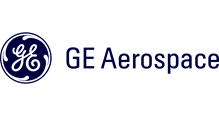
December 1 - 6, 2024
Boston, Massachusetts
Symposium Supporters
2024 MRS Fall Meeting & Exhibit
QT01.04.03
[1] Y. Xie, H. Hewa-Walpitage, J. Morgenstein, V. Blum, Z. V. Vardeny, D. B. Mitzi, ACS Mater. Lett. 6, 3161 (2024).
Homochiral and Heterochiral Cation Mixing in 2D Perovskites for Enhanced Structural Asymmetry and Spin Splitting
When and Where
Dec 3, 2024
9:30am - 9:45am
9:30am - 9:45am
Sheraton, Fifth Floor, Jamaica Pond
Presenter(s)
Co-Author(s)
Yi Xie1,Heshan Hewa-Walpitage2,Jack Morgenstein1,Volker Blum1,Zeev Valentine Vardeny2,David Mitzi1
Duke University1,The University of Utah2
Abstract
Yi Xie1,Heshan Hewa-Walpitage2,Jack Morgenstein1,Volker Blum1,Zeev Valentine Vardeny2,David Mitzi1
Duke University1,The University of Utah2
Overcoming the constraints of single-cation phases and further enhancing structural asymmetry emerges as a critical objective for optimizing emergent optoelectronic and spin-related properties in two-dimensional (2D) hybrid organic-inorganic perovskites (HOIPs). Mixing two different chiral cations within the 2D HOIP framework provides a particularly interesting opportunity to tailor the inorganic lattice through varied chirality mixing (with the same overall HOIP elemental composition), as one can envision two distinct pathways—i.e., homochiral (S/S) or heterochiral (R/S) cation mixing.1 Here, we demonstrate the homo- and heterochiral mixing in PbI42--based 2D HOIPs via a 1:1 mixing of S- and R-4-bromo-α-methylbenzylammonium with S-1-methylhexyammonium. Two types of arrangements of the cations induced by varied chirality mixing facilitate the accommodation of altered degrees of lattice strain, further tailoring the structural symmetry and distortions compared with their single-cation counterparts. Remarkably, the R/S system achieves an enhanced structural asymmetry, marked by a significant Pb-I-Pb bond angle disparity Δβ of 9.24°, attributed to the distinctive asymmetric templating effects from mixed cations with distinct molecular structures and opposite absolute configurations. Consequently, density functional theory (DFT) calculations indicate a substantial spin splitting (ΔE = 78.5 meV), among the largest reported for PbI42--based 2D HOIPs. The non-equivalent chiral information delivered by homo- and heterochiral mixing further diversifies and modulates the Cotton effect, as evidenced by the non-mirror-symmetric circular dichroism spectra, despite maintaining the same elemental composition. Our study demonstrates a novel material design strategy to overcome the limitations of current single-cation and single-enantiomer phases and to enhance chirality transfer and structural asymmetry within the 2D inorganic lattice for optimizing various distortion- and symmetry-dependent properties.[1] Y. Xie, H. Hewa-Walpitage, J. Morgenstein, V. Blum, Z. V. Vardeny, D. B. Mitzi, ACS Mater. Lett. 6, 3161 (2024).
Keywords
perovskites | x-ray diffraction (XRD)
Symposium Organizers
Volker Blum, Duke University
Sascha Feldmann, Harvard University
Paulina Plochocka, CNRS
Tze Chien Sum, Nanyang Technological University
Symposium Support
Silver
Light Conversion
FHI-aims - First-Principles Materials Simulations
Quantum Design
Light Conversion
FHI-aims - First-Principles Materials Simulations
Quantum Design
Session Chairs
Rayan Chakraborty
Haipeng Lu




